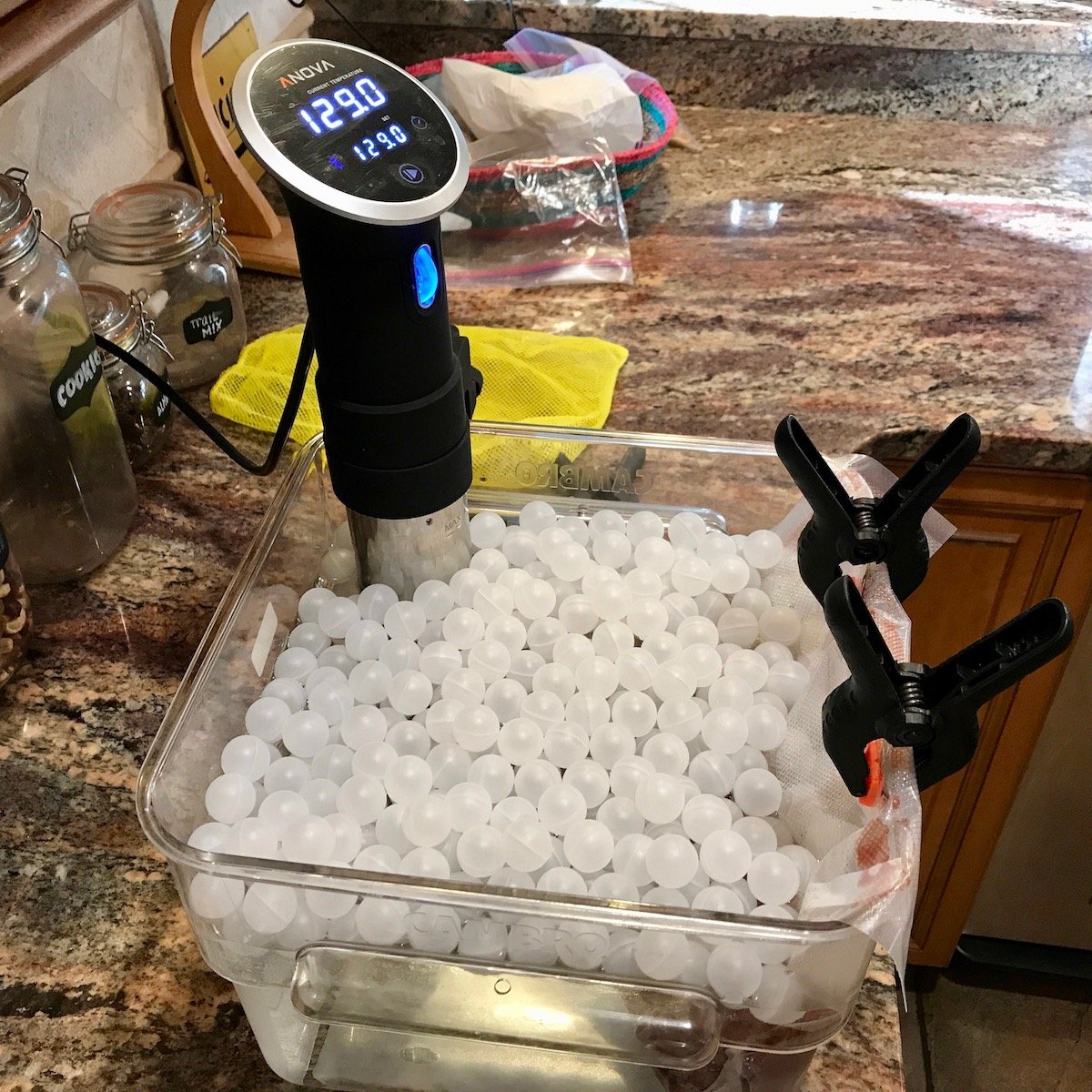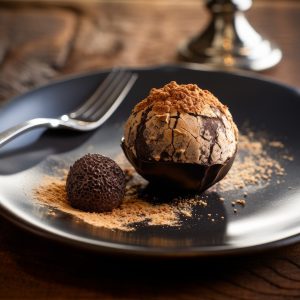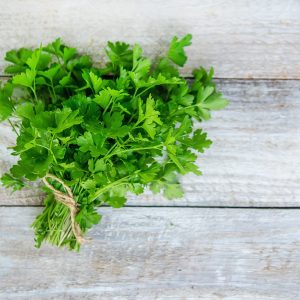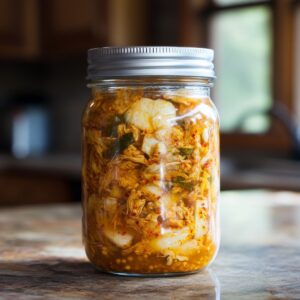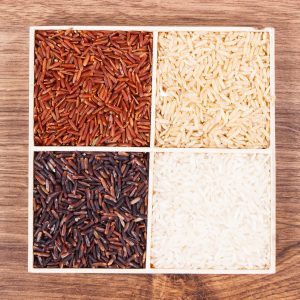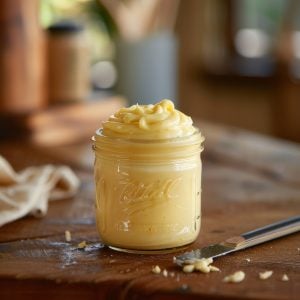What is Clarified Butter?
Clarified butter, known for its rich flavor and high smoke point, is widely used in various culinary techniques. Often seen in professional kitchens, it is appreciated for its versatility and ability to enhance dishes’ taste and texture.
Clarifying butter involves slowly melting unsalted butter and carefully removing the milk solids and water, producing a pure, golden fat. This technique allows the butter to be heated to higher temperatures than regular butter, making it an ideal choice for sautéing, frying, and baking.
In addition to its practical cooking benefits, clarified butter is valued for its extended shelf life when stored properly. Without the milk solids, which can cause butter to spoil, clarified butter can be kept longer, even at room temperature in some cases.
Its use is particularly prevalent in French and Indian cuisines, where it adds a subtle, nutty flavor to foods. This recipe will guide readers through the simple steps needed to create clarified butter at home, ensuring a product free from impurities and ideal for various culinary applications.
Whether used in sauces or for frying, clarified butter provides a rich, flavorful base that elevates everyday cooking.
It Is Not Solid Fat
Most people think of butter as solid fat. It certainly looks solid enough. However, if we look closer, butter is an emulsion. An emulsion is a forced mixture of two dissimilar substances that don’t usually like to mix. Think oil and water.
In the case of butter, the two dissimilar substances are butterfat (roughly 80%) and water (roughly 17%), along with about 3% milk solids. The emulsion breaks, and the components separate when heated. Clarified butter is nothing more than pure butterfat. Not so intimidating now, huh?
How to Make Clarified Butter
Unsalted butter is placed in a saucepan over low heat to make clarified butter. It is then allowed to melt slowly, ensuring it does not burn or brown. Once the butter has completely melted, the milk solids will separate from the golden liquid fat. These milk solids and any foam that rises to the surface should be carefully skimmed off with a spoon.
The clarified butter is then left to sit for a moment to allow any remaining solids to settle at the bottom of the pan. At this point, the golden liquid is gently poured through a fine-mesh strainer or cheesecloth to catch any remaining impurities, leaving only the clarified butter.
Once strained, the clarified butter can be transferred to a clean container and is ready for use. It can be stored in the refrigerator for several weeks or at room temperature for a shorter period due to the absence of milk solids that would otherwise spoil. This clarified butter is now ready for cooking at higher temperatures or to enrich sauces with a rich, buttery flavor.
Advantages of Clarified Butter
Chefs widely regard clarified butter as superior to whole butter for high-heat cooking, such as sautéing. This preference arises because in whole butter, the milk solids brown and burn well before the butterfat reaches its smoke point.
As a result, whole butter is not typically suited for high temperatures. However, clarified butter provides an ideal solution for those seeking the rich taste of butter without the risk of burning milk solids.
Whether clarified butter is worth making at home depends on the cook’s needs. For those who frequently sauté or fry and prefer the flavor of butter over more neutral oils, clarified butter can be a practical choice. The process is simple, and once prepared, clarified butter can be stored for extended periods. When refrigerated, it remains fresh for several months and can be frozen even longer.
An additional benefit is that clarified butter, with its milk solids removed, is suitable for lactose intolerant people. However, for cooks focused on lower-calorie options or a higher content of mono- and polyunsaturated fats, other cooking oils might be preferred over butter, which is predominantly saturated fat.
Ghee
Ghee is a clarified butter originating from South Asian cuisine, especially prominent in Indian, Pakistani, and Bangladeshi cooking. It is made by slowly simmering unsalted butter, which separates the milk solids and water from the butterfat.
Unlike standard clarified butter, ghee is cooked longer, allowing the milk solids to caramelize and impart a rich, nutty flavor to the butterfat. After the milk solids are strained out, what remains is a golden, aromatic fat highly prized for its taste and versatility.
Due to the absence of water and milk solids, Ghee’s higher smoke point makes it excellent for high-heat cooking such as sautéing, frying, and roasting. It also has a long shelf life and can often be stored at room temperature without spoiling.
In addition to its culinary uses, ghee is valued in Ayurvedic practices for its potential health benefits, including aiding digestion and supporting skin health. This ingredient’s unique flavor and resilience to high temperatures have made it a staple in many traditional dishes, from curries and dals to preparing breads and sweets.
How to Prepare Clarified Butter Video


